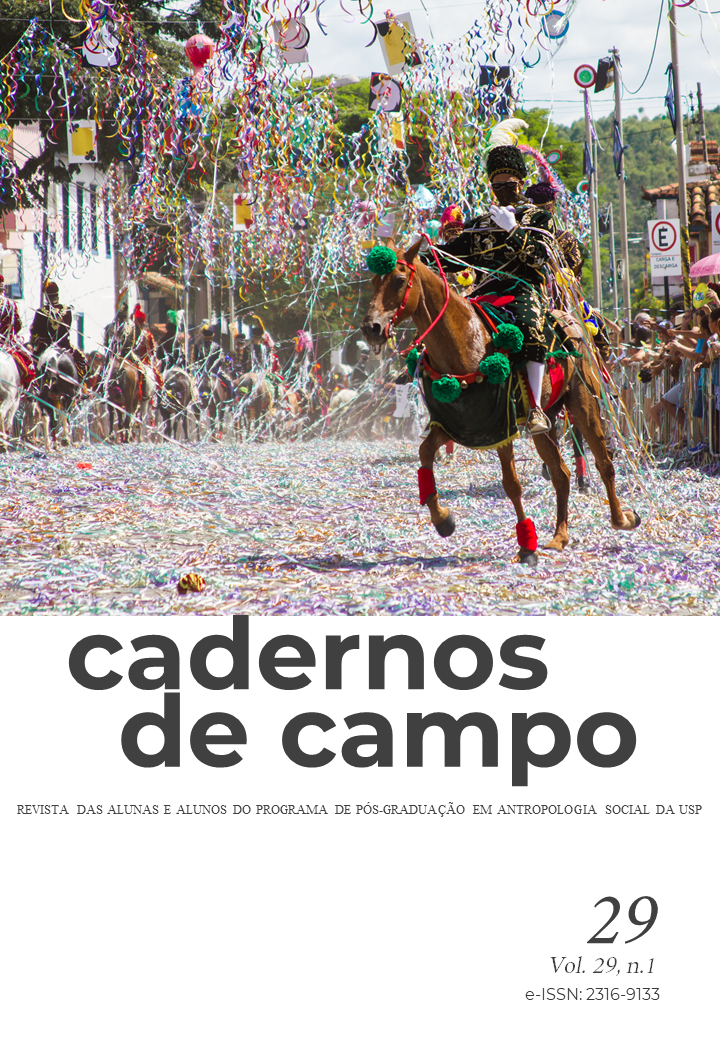Shape the desire in accordance with the law
the legal translation and the untranslatable of madness in a judicial asylum
DOI:
https://doi.org/10.11606/issn.2316-9133.v29i1p53-73Keywords:
Medida de Segurança, Tradução, Etnografia, Desejo, TratamentoAbstract
In this paper I devote myself to analyze an ambiguous aspect of the compulsory treatment offered by a forensic hospital: the implication between law and desire. To comprehend how the legal-therapeutic machinery that manages the mandatory custody creates and works through the relation between the hospital’s inmates and their treatment, I describe, at the first part of this paper, the way patients' wishes are "translated" legally. At the second part, I wrote how the legal assistance team and the clinical one overcome the resistances and difficulties founded by patients to join the community-based treatment outside the hospital, that enables them to be released. Intertwining both pars of this text I show the obstacles founded and the creativity of workers responsible for the inmates’ legal attendance that should guarantee the progress of their criminal proceedings and the workers effort to make their interaction at the meeting possible.
Downloads
References
BATAILLE, Georges. (2014). O Erotismo. Belo Horizonte: Autêntica, 2014.
BONET, Octavio; TAVARES, Fátima Regina Gomes. (2007) O cuidado como metáfora nas redes de prática terapêutica. In: PINHEIRO, Roseni; MATTOS, Ruben (orgs.), Razões Públicas para a Integralidade em Saúde: O Cuidado como Valor, Rio de Janeiro: CEPESC, p.263-278.
BRASIL. (2004). Resolução nº 05, de 04 de maio de 2004. Brasília: Conselho Nacional de Política Criminal e Penitenciária. Disponível em: < http://www.mpsp.mp.br/portal/page/portal/cao_civel/cadeias/pe_legislacao/2004resolu05.pdf>. Acessado em: 27 de maio de 2017.
CARDOSO DE OLIVEIRA, Luís Roberto. (2010). A dimensão simbólica dos direitos e a análise dos conflitos. In Revista de Antropologia, USP, v.53, p. 451-473.
CARRARA, Sérgio. (1998). Crime e Loucura: o aparecimento do manicômio judiciário na passagem do século. Rio de Janeiro: EdUERJ; São Paulo:EdUSP.
CRAPANZANO, Vincent. (2005). A cena: lançando sombra sobre o real. In: Mana, Rio de Janeiro, v. 11, n. 2, p. 357-383.
DAS, Veena. (2004). The Signature of the State: The paradox of legibility. In: DAS, Veena; POOLE, Deborah. Anthropology in the Margins of the State. New Mexico: School of American, p.225-252.
DELEUZE, Gilles; GUATTARI, Félix. 2015. Kafka: por uma literatura menor. Belo Horizonte: Autêntica Editora.
FOUCAULT, Michel. (2015). A Sociedade Punitiva: curso no Collège de France (1972-1973). São Paulo: WMF Martins Fontes.
FRANCO, Túlio Maia. (2017). Além da medida: uma etnografia do “tratamento” previsto na medida de segurança em um manicômio judiciário do Estado do Rio de Janeiro. Rio de Janeiro. Dissertação (Mestrado em Sociologia e Antropologia) – Programa de Pós-Graduação em Sociologia e Antropologia. Rio de Janeiro: Universidade Federal do Rio de Janeiro.
HAN, Byung-Chul. (2015). A Sociedade do Cansaço. Petrópolis: Vozes.
HANKS, William; SEVERI, Carlo (2014). Translating worlds: the epistemological space of translation. In: HAU: Journarl of Ethnographic Theory v.4 n.2, p. 1–16.
KAFKA, Franz. (2011). Essencial Franz Kafka. Cia das Letras: São Paulo (edição Kindle).
MAUSS, Marcel. (2003). Ensaio Sobre a Dádiva – Forma e razão da troca nas sociedades arcaicas. In:_______, Sociologia e antropologia. São Paulo: Cosac & Naify, p. 183-314.
MELVILLE, Herman.2015. Bartleby, o escrevente: Uma história de Wall Street. Belo Horizonte: Autêntica (edição Kindle).
PERES, Maria Fernanda Tourinho; NERY FILHO, Antônio. (2002). A doença mental no direito penal brasileiro: inimputabilidade, irresponsabilidade, periculosidade e medida de segurança. Hist. cienc. saude-Manguinhos, v.9, n.2, p. 335-355.
SILVA, Martinho Braga Batista e. (2010a). O desafio colocado pelas pessoas em medida de segurança no âmbito do Sistema Único de Saúde: a experiência do PAILI-GO. Physis (UERJ. Impresso), v. 20, p. 653-682.
______. (2010b). As pessoas em medida de segurança e os Hospitais de Custódia e Tratamento Psiquiátrico no contexto do Plano Nacional de Saúde no Sistema Penitenciário. In: Revista Brasileira de Crescimento e Desenvolvimento Humano, v. 20, p. 95-105.
STEVENSON, Lisa. (2012). The Psychic life of biopolitics: Survival, cooperation, and Inuit community, In: American Ethnologist, v. 39, n.3, p. 592–613.
______. (2014). Life beside itself: imagining care in the Canadian Artic. Oakland: University of California Press.
STRATHERN, Marilyn. (2015). Parentesco, direito e o inesperado: parentes são sempre uma surpresa. São Paulo: Editora Unesp.
TAUSSIG, Michael. (1999) Defacement: Public Secrecy and the Labor of Negative. Standford: Standford University Press, 1999.
VINUTO, Juliana; FRANCO, Túlio Maia. (2019). “Porque isso aqui, queira ou não, é uma
cadeia”: as instituições híbridas de interface com a prisão. Mediações, v. 24 n. 2, p.265-277.
Downloads
Published
Issue
Section
License
I authorize Cadernos de Campo Journal of Anthropology to publish the work of my authorship/responsibility, as well as I take responsibility for the use of images, if accepted for publication.
I agree with this statement as an absolute expression of truth. On my behalf and on behalf of eventual co-authors I also take full responsibility for the material presented.
I attest to the unpublished nature of the work submitted





